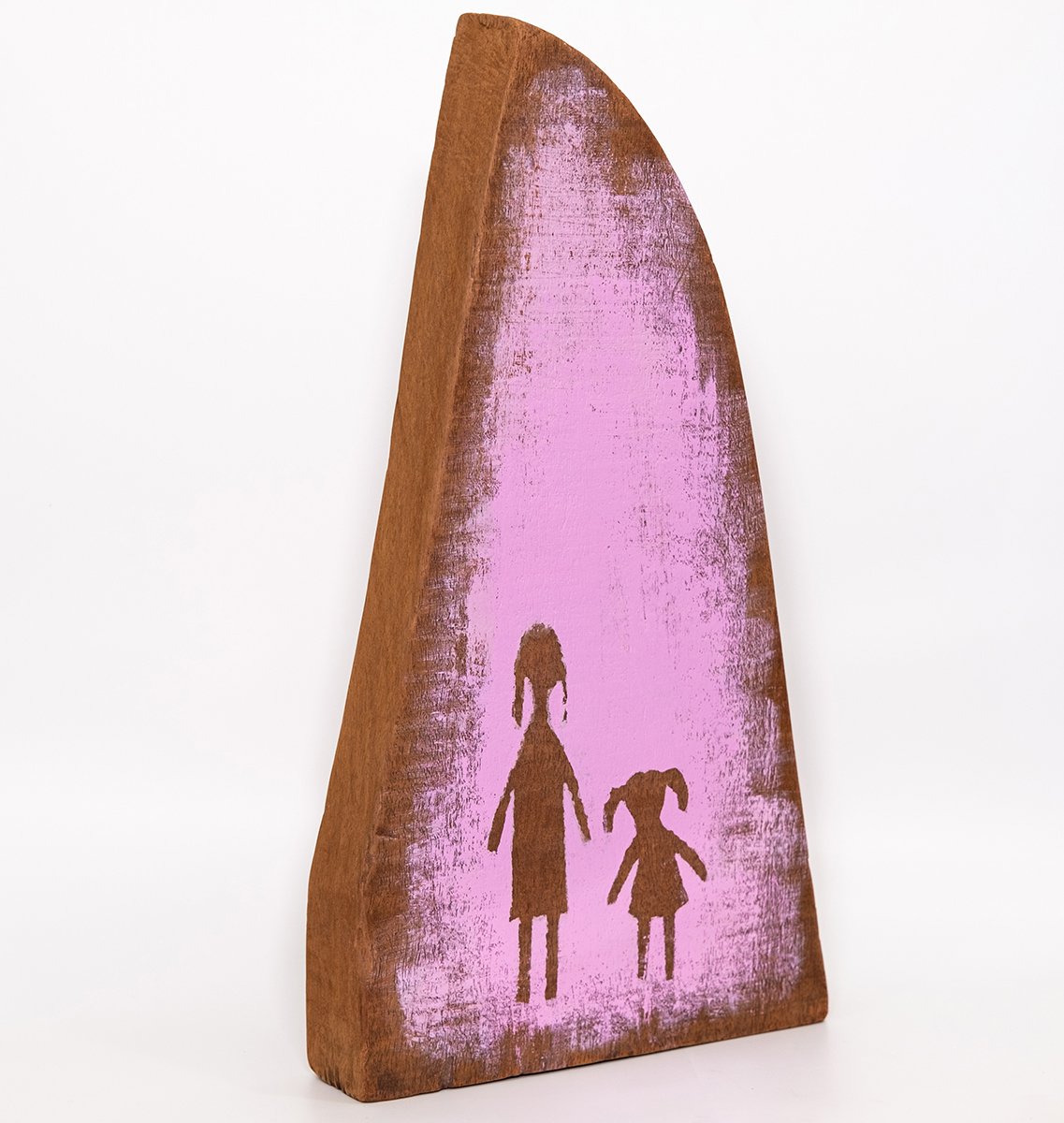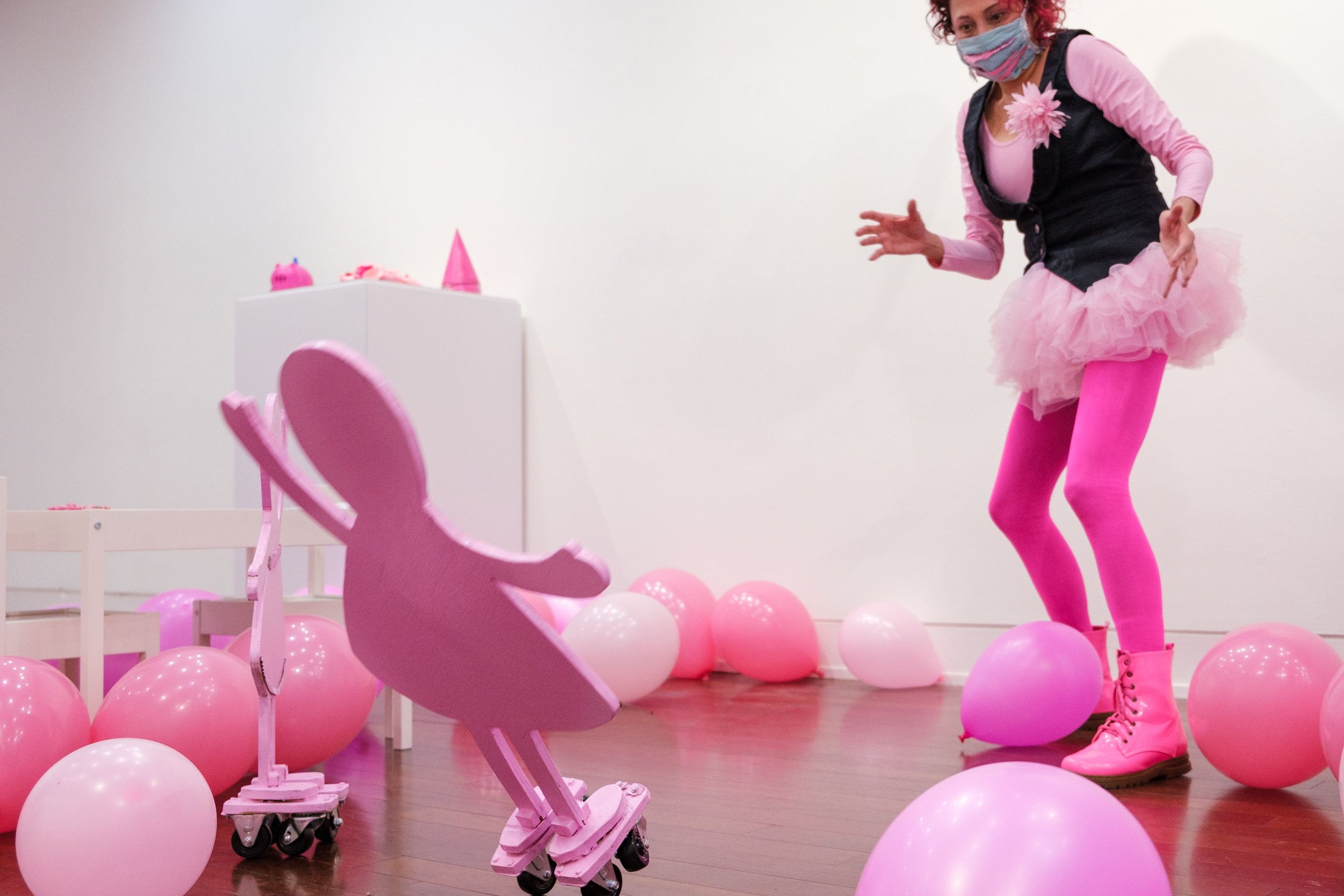A Pleasurable Conversation with Carolina Mayorga
Photo Credit: Craig Garrett
Carolina Mayorga is a Columbian visual artist based in Washington, DC. Her work addresses issues of social and political content. Comments on migration, war, identity, translate into site-specific installations and multimedia pieces including video, performance art, photography, and drawing. Carolina Mayorga has had one-person and group exhibitions in Colombia, Mexico, Argentina, Peru, Sweden, and numerous cities throughout the United States. Her latest exhibits have taken place at the Capitol Hill Arts Workshop, Washington, DC, Joan Hisaoka Healing Arts Gallery, Washington, DC, Art Museum of the Americas, Washington, DC, Casa del Libro Total, Bucaramanga, Uniandinos, Bogotá, Colombia. She is the recipient of many awards including the DC Commission on the Arts and Humanities. Washington, DC, Art Bank Program, 2021-2022 the DC Commission on the Arts and Humanities, Washington, DC, Project-based grant for individuals, 2018-2022, the DC Commission on the Arts and Humanities. Washington, DC. Artist Fellowship Program, 2015-2021. Her work is in collections around the world, in art spaces such as the National Museum of Women in the Arts in Washington D.C., Andres Institute of Art, New Hampshire, Universidad Nacional, Bogotá, Colombia, and Kronan Sculpture Park in Lulea, Sweden, and elsewhere. I had the pleasure and honor of asking Carolina about what she wants to say with her art, how performance art is poetic, and how she uses art to address political issues that she deals with as a Latino woman.
UZOMAH: How does creating a live performance no different than creating a work of art that is not in motion?
CAROLINA: For me, all works I create regardless of the medium start with a conceptual basis that later on translates into a site-specific installation, live performance, or a Two-dimensional piece. I usually begin with an idea, concept, or even a very familiar and personal image that later dictates the art form that better suits the message I intend to convey.
U: How has being an artist changed your life?
C: Since I’ve been an artist for most of my life, I haven’t experienced a change except at the beginning of my career when I decided to pursue a master’s degree in the United States as at the time there were no graduate programs in fine arts in Colombia. This experience and cultural contrast became the core of my work.
U: What is the most essential part of the art process for you?
C: I usually start a project with something very personal, an image or something I like, a memory, an experience, and then turn it into an idea that goes beyond my personal experience and becomes more universal. The beginning is always natural and fluid and it becomes more politically and socially charged as I use my voice to voice others.
Pat’s Chair from the Fauve series Medium: Watercolor and ink on paper Dimensions: 12 x 9 inches. 30.5 x 22.9 cm. 2021 Location: DC Commission of the Arts and Humanities. Washington, DC Image Credit: Craig Garrett
U: What about the arts can help others understand different people and cultures?
C: Art is a language of expression, I’d say that more than creating understanding, it opens channels of communication between cultures, finding conceptual similarities and differences that we all share as artists and human beings.
U: How is doing performance art poetic?
C: In my experience as an interdisciplinary artist, I find performance art more emotionally charged than other mediums I use. The immediacy of the piece, the contact with the audience, the use of one self’s body as an art medium makes it very powerful.
U: How is how you study the body for a performance the same as how you look and use the body in creating a sculpture?
C: I have created works in which all media come together as one piece and the body is present in the sculpture or installation making process as a performance or happening. Many of my projects begin with a performance and continue in a video, site-specific installation, or sculpture that extends the concept of the project and emphasizes the message. I have created multiple projects in which a performance art piece translates into a video that emphasizes the concept. An example of this is the project Maid in the USA, an endurance performance that transitions to the video piece MAID 24/7, a looping video with repeating and sped-up cleaning gestures. See the project at: https://carolinamayorga.com/maid-in-usa-chicago/ Another example is the performance “Mesera” (Waitress) in which the live performance became a video piece. See the project at: https://carolinamayorga.com/mesera/
PINKmentation Medium: Performance art 2018 Location: University of Virginia and downtown Charlottesville, VA, USA. Image Credit: Craig Garrett
U: How is the audience different from when you are doing performance art and when your art is on the wall and displayed?
C: Some of my performances and installation art pieces involve audience participation in which the spectator becomes an active part of the work. At first, these can appear to be more engaging. However, some of my Two-dimensional and traditional works create more subtle reactions but can create an experience as engaging as an interactive performance. For my Site-specific project Pink Ranchos and Other Ephemeral Zip Codes, which included drawings, sculptures, and video projections, I created an immersing environment offering my contrasting pleasing perspective on life dictated by privation and abandonment. See the project at:
https://carolinamayorga.com/pink-ranchos-and-other-ephemeral-zip-codes/
U: What makes performance art poetic?
C: All art forms can be as poetic. Actually, some performance art pieces can be considered un-poetic, even disruptive, and uncomfortable such as some of my dance performances in which dance moves and gestures are contrasted with messages about migration, women’s rights, and the environment. See virtual performance for the Siren Arts Performance art series, Summer 2020: https://carolinamayorga.com/latin-fever-dance-party/
Marisol’s Warriors from the series Pink Automatis, Medium: Sculpture Dimensions: 15.25 x 8 x 2 inches. 39 x 20 x 6 cm. 2019 Location: Mexican Cultural Institute. Washington, DC, USA Image Credit: Craig Garrett
U: How do you use art to address political issues that you deal with as a Latino woman?
C: I address issues of cultural and gender identity through different media but mostly through performance art pieces in which I play with stereotypes related to roles usually attributed to Latinas in the US. Examples include Maid in the USA, a cleaning performance and video piece, Mesera (Waitress), and Lady Libertad among others.
Cambuche party, Medium: Video projection for site-specific interdisciplinary project Dimensions: Variable 2019 Location: Art Museum of the Americas, Organization of American States Washington, DC, USA, Galería Uniandinos, Bogotá and Casa del Libro Total, Bucaramanga, Colombia Image Credit: Craig Garrett
U: Why do you think art is so impactful in addressing issues that affect people universally that are societal, cultural, and political?
C: I believe an image, a simple line, a touch of color and other visual elements have the ability to relate to many different historical moments opening interpretations of a variety of social, cultural, and political experiences. Art as a universal visual language creates connections beyond borders, transcends beliefs, and touches people at individual and collective levels.
ARTidotes, Medium: Performance art for community-based project Dimensions: N/A 2021 Location: Joan Hisaoka Healing Arts Gallery. Washington, DC, USA, Virtual participation and showings: Culiacán, México and Bucaramanga, Colombia. Image Credit: Craig Garrett
U: What is the message you wish to say with your art?
C: I intend to create awareness about social and political issues related to migration, cultural and gender identity. This responds directly to my bicultural background as a Colombian/American female, observations of my cultural surroundings, and everyday encounters as a foreigner as well as a local. Most recently, I’ve begun to explore my role as a visual artist and my position in the art world. An example of this is the video performance Q & A with Carolina Mayorga, an interview-style performance in which I respond to stereotyped/gallery-style questions with long periods of silence. Visit: https://carolinamayorga.com/qa-interview-with-carolina-mayorga/
U: What is the importance of art in how it can be healing?
C: I’ve always believed in the integration of art into daily life and art as a dynamic, vibrant, and restoring instrument for all. My most recent community-based project ARTidotes, at the Joan Hisaoka Healing Arts Gallery in Washington, DC, was inspired by my own experience in the last year and a half in which I turned completely into my art as a way to cope with the challenges presented by the global situation. For the project, I invited artists and audiences of all disciplines and backgrounds to join a collective journey that united us all and offered a creative response in times of uncertainty and despair. See the project at:
https://carolinamayorga.com/artidotes/
https://www.facebook.com/ARTidotes
My next project ARTidotes in color, a challenging exploration of color and traditional media, will be an expansion of my interest in bringing art closer to the community by focusing mostly on art’s accessibility to audiences not necessarily familiar with the art world. Paintings, sculptures, and other interactive works will be exhibited at non-traditional art venues in which participants will become artists themselves creating individual expressions that will turn into a collective, strengthening, and restoring experience for all.
For more information about Carolina’s latest performances and exhibits please visit her site. Also, follow her on Instagram, Twitter and like her on Facebook.





